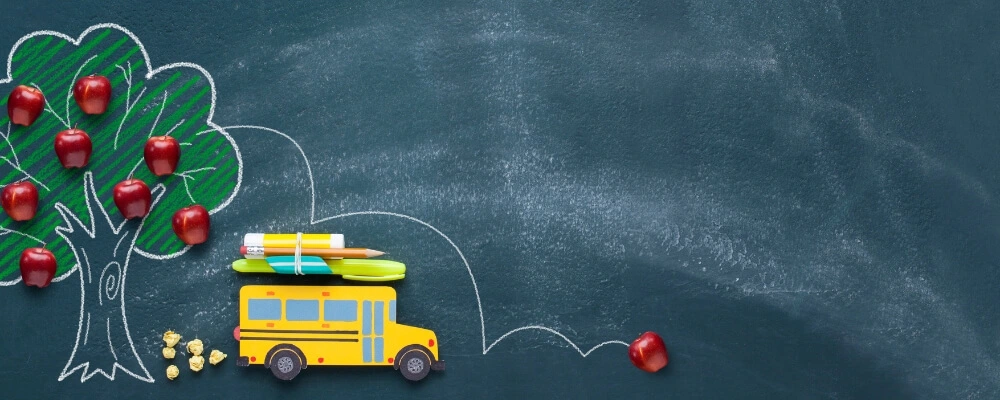The thrill of a new academic year brings fresh notebooks, sharpened pencils, and the promise of new friendships. As parents, while we share in our children’s excitement, our primary concern is, and always will be, their safety. As classrooms start buzzing with activity and schoolyards come alive with the chatter of students, ensuring our children’s safety becomes paramount. From their journey to school to their interactions on the digital playground, there are various aspects to consider.
Here, we’ve compiled a comprehensive list of 10 Back To School Safety Tips that every parent should be equipped with. This guide provides insights and strategies to ensure that as our children step into another year of learning, they do so in the safest environment possible. Let’s delve into these crucial tips and create a secure academic experience for our young learners.
What Every Parent Needs To Know About Back-To-School Safety Tips
Back to school means a fresh start. Here are a few tips to help children stay safe in the new year.
1. Safe Travels
Walking to school can be exciting for many children, allowing them independence. However, they need to be aware of the safest route. Using designated crosswalks is crucial because these are typically located in areas with good visibility for drivers. Obeying traffic signals is non-negotiable; not only is it the law, but it’s also designed to keep pedestrians safe. Crossing the street between parked cars can be incredibly dangerous. Cars block the pedestrian’s view of oncoming traffic, and equally, drivers might not see someone stepping out from between parked vehicles until it’s too late.
When it comes to bicycling, the size and functionality of the bicycle are of utmost importance. A too-big or small bicycle can be challenging to control, increasing the risk of accidents. Helmets are a non-negotiable safety measure. They drastically reduce the risk of serious head injuries in case of an accident. Knowledge of road rules is just as crucial for cyclists as for drivers. Cyclists should be predictable, signaling turns and obeying traffic signs.
While generally safe, bus travel comes with its own set of precautions. Children can easily get excited while waiting, so teaching them to stand at least six feet from the curb is crucial. This distance ensures they are safely away from the moving vehicle and any unexpected movements it might make. Moreover, always crossing in front of the bus ensures the bus driver can see them. Crossing behind a bus is dangerous as other vehicles might not anticipate a child emerging behind it.
2. Stranger Danger
Children’s natural curiosity and trust can make them vulnerable. It’s crucial to instill a sense of caution without instilling fear. They should be made aware that not all strangers have good intentions. A simple rule of not talking to or accepting anything (like gifts or rides) from strangers can be life-saving.
Staying with a group can deter potential abductors or those with malicious intent. If something feels wrong or someone is making them uncomfortable, children should be encouraged to report it immediately to school officials or another trusted adult.
3. Emergency Information
Having the right information on hand can make a significant difference in an emergency. Children should be trained to memorize key personal details like their full name, address, and phone number. Knowing the names of their parents or guardians can also be crucial in emergency situations.
To supplement their memory, having a small card or note in their backpack with emergency contact details ensures that if they’re ever in distress, they can seek help efficiently.

4. School Bag Safety
The right backpack can be more than just a style statement; it’s a tool for health and safety. Padded shoulder straps distribute weight evenly, preventing strain. Overloading a bag is a common mistake.
An overly heavy bag can lead to poor posture, muscle strain, or even more serious back problems. Ideally, the total weight of the filled backpack should never exceed 10-15% of the child’s body weight.
5. Food Safety
Lunchtime is a break children look forward to. Food safety is as important as nutrition if they bring lunch from home. An insulated bag ensures the food maintains its temperature, reducing the risk of bacteria growth. Including a cold pack can be vital, especially in warmer weather, to keep perishables safe.
With the rise in food allergies among children, sharing food can sometimes have serious consequences. Educating your child about the risks of sharing can protect them and their friends from allergic reactions.
6. Allergies and Medications
Allergies and medical conditions can pose significant risks in school environments, especially when the staff is unaware of a child’s specific needs. By proactively informing the school about your child’s allergies or necessary medications, you create a safer environment for them.
This information allows teachers and administrative staff to prepare and respond effectively in case of an allergic reaction or medical emergency. Additionally, being upfront about any interventions or precautions ensures that your child gets the appropriate care if an issue arises during school hours.
7. Bullying Prevention
Bullying is an age-old problem, but its impact on a child’s mental and emotional health is profound. Parents need to have proactive discussions with their children about the importance of treating others with kindness and respect. However, it’s equally essential to ensure that your child knows the steps to take if they find themselves the target of bullying.
Fostering open communication is the key. By creating a safe space for them at home, children are more likely to share their feelings, experiences, and concerns about peer interactions, allowing parents to intervene or offer guidance as necessary.
8. Digital Safety
The digital age brings many benefits but also ushers in new risks, especially for children. The internet is a vast space; without proper guidance, children can inadvertently share personal information that can be used against them. Educating your child about the potential dangers of oversharing online and the importance of using privacy settings can shield them from many cyber threats.
Cyberbullying, a modern menace, can be as damaging, if not more so, than traditional bullying. Encouraging your child to recognize signs of cyberbullying and urging them to discuss such experiences can help address the issue promptly.

9. School Zones
For teenagers who have just begun to drive, the responsibility is enormous. School zones, in particular, require heightened attention due to children’s concentration. It’s paramount for teen drivers to be reminded regularly about the importance of adhering to speed limits in these zones.
A child might suddenly dart into the road, or there might be a rush of students at a crosswalk, and a cautious driver is better equipped to respond safely in such scenarios. By emphasizing the need for extra vigilance in school zones, parents can contribute to safer roads for all.
10. Emergency Drills
Schools conduct emergency drills not as a formality but as an essential safety measure. Knowing what to do can be the difference between safety and harm, whether a fire, earthquake or any other emergency.
Parents should ensure that their children understand the seriousness of these drills. Children should know the designated safe zones, exits, and emergency procedures. By reinforcing the importance of these drills at home, parents can ensure their child is better prepared for an emergency.
Conclusion
Navigating a new academic year’s myriad challenges can be exciting and daunting. As our children eagerly step into new classrooms, meet new teachers, and forge new friendships, our inherent responsibility as parents is to ensure their safety at every juncture.
These 10 Back-to-School Safety Tips are reminders and pillars of guidance in this journey. By being proactive, informed, and vigilant, we can create an environment where our children don’t just thrive academically but do so within the protective bounds of safety.
Remember, preparedness and open communication are key. As we equip ourselves with these essential safety insights, we’re not just sending our children to school; we’re sending them with the confidence that they are safeguarded at every step. Here’s to a successful, fulfilling, and most importantly, safe school year ahead!





